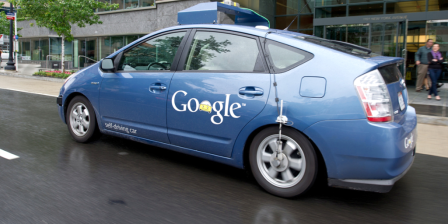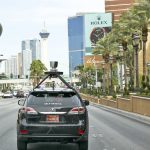Alphabet Accelerates Self-Driving Project With Waymo
by Thom Forbes, Featured Columnist @tforbes, December 14, 2016
Google’s self-driving car initiative hit the road (December 22, 2016) as an autonomous subsidiary of Alphabet, Inc. called Waymo, which stands for “a new way forward in mobility.” For seven years, the initiative has accumulated more than two million miles of self-driving experience as one of Google’s X lab’s projects.
“It’s an indication of the maturity of our technology,” Waymo CEO John Krafcik said at a press conference in San Francisco. “We can imagine our self-driving tech being used in all sorts of areas.”
“The move shows ‘confidence that we are close to bringing this (technology) to a lot of people,’ Krafcik, who came to Google from Hyundai USA 15 months ago, said. ‘We’ve sort of reached an inflection point,’” reports Reuters’ Alexandria Sage.
“That came in October 2015, when one of the company’s self-driving cars gave the first fully autonomous ride in Austin, Texas, to a blind man with no one else in the car. Normally during testing, an engineer sits in the passenger seat to monitor the technology,” Sage continues.
“Waymo’s transition from experiment to full-fledged company marks another step in an effort to revolutionize the way people get around,” writes the Associated Press’ Michael Liedtke. “Instead of driving themselves and having to find a place to park, people will be chauffeured in robot-controlled vehicles if Waymo, automakers and Uber realize their vision.”
It also means that the technology developed by the tech giant will need to start earning its spending money.
“Google has struggled to find a way to come to market,” Roger Lanctot, an associate director at research firm Strategy Analytics, tells the New York Times’ Daisuke Wakabayashi. “We’ve come to the point where Google needs a return.”
“The challenge for Google is to devise a successful strategy for making money from self-driving cars. Unlike Uber, it doesn’t have a ride-hailing service that can generate fares — at least not yet. And unlike Tesla or other automakers, it doesn’t have an auto manufacturing background to build cars or a network to sell them,” Wakabayashi writes.
“Alphabet has advocated cars without traditional controls, arguing that eliminating the option of human control is safer than requiring people to take control if the car encounters a situation it doesn’t understand,” write Jack Nicas and Tim Higgins for the Wall Street Journal.
“Waymo has tested prototype vehicles that lack a steering wheel and brake pedals, and Krafcik said the company is lobbying regulators to allow cars without such controls. Meanwhile, he said Waymo likely would install its technology in conventional vehicles as federal rules require controls such as steering wheels,” they continue.
“Earlier this year, Waymo’s precursor licensed its self-driving technology to Fiat Chrysler for 100 Pacifica minivans currently in production. Financial terms of that deal have not been disclosed,” the AP’s Liedtke reminds us.
“As for where the business is headed under the new Waymo brand, Krafcik spoke of a range of potential opportunities,” write Darrell Etherington and Lora Kolodny for TechCrunch.
“We can imagine this [technology] in ride-sharing, in transportation, trucking, logistics even personal use vehicles and licensing with automakers, public transport and solving the last mile,” he said. “Self-driving technology is awesome in all these categories.”
That may be so, but “the current regulatory climate in the U.S. around autonomous vehicles is quite hazy, with the federal government committing to figuring out its rules for testing and integrating self-driving cars as soon as it can, and many states are currently vying to be the most permissive to autonomous tests,” Mike Murphy writes on Quartz. “There are those, however, who believe that self-driving cars, even after very public demonstrations like Google’s — and Uber’s — are very far away from being safe enough to bring to U.S. roads, let alone have humans sit in them as guinea pigs,” he cautions.
In a blog post on Medium, Dmitri Dolgov, head of Google’s self-driving technology, writes: “When we first started the project 7.5 years ago, we saw the potential of this technology to help millions of people, making roads safer and improving quality of life. Today, our team is more confident than ever of a fully self-driving future. With every passing milestone — driving the curves of Lombard Street, navigating rain and dust in four U.S. cities, building three generations of self-driving cars (with a fourth on the way) — we’re even more committed to building that future.”
As Waymo, as Firestone used to say, the rubber meets the road.
MediaPost.com: Search Marketing Daily
(41)













